10 science headlines that captivated audiences in 2017
People from around the world looked to the sky this year in the name of science, whether it be to watch a total solar eclipse or to ponder if life may exist on newly-discovered planets light years away from Earth.
From new records in human spaceflight to discoveries of distant worlds, here are 10 memorable science stories that made headlines in 2017:
President Trump announces US withdrawal from Paris Climate Agreement

President Donald Trump speaks about the U.S. role in the Paris climate change accord, Thursday, June 1, 2017, in the Rose Garden of the White House in Washington. (AP Photo/Pablo Martinez Monsivais)
On June 1, President Donald Trump announced that the United States will be withdrawing from the Paris Climate Agreement, a climate treaty that was ratified on Nov. 4, 2016.
Every country in the world has signed the agreement to limit global temperature rise to no more than 2 degrees Celsius (3.6 degrees Fahrenheit) above pre-industrial levels. The United States will become the only country in the world that is not a part of the agreement.
First images from GOES-16
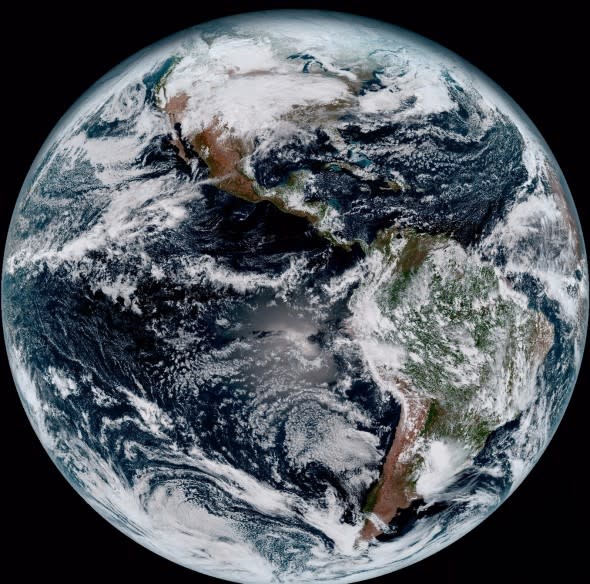
This composite color full-disk visible image of the Western Hemisphere was captured from NOAA GOES-16 satellite at 1:07 pm EST on Jan. 15, 2017 and created using several of the 16 spectral channels available on the satellite's sophisticated Advanced Baseline Imager. (Credits: NOAA)
NOAA's first of a new generation of weather satellites captured its first high-resolution images of the planet on Jan. 15, 2017.
The weather satellite spent the year capturing incredible images of snowstorms, thunderstorms and hurricanes and will become fully operational on Dec. 20, 2017. Its twin, GOES-17, is scheduled to launch in March 2018, supplying meteorologists with even more information to help improve weather forecasting.
The Great American Eclipse
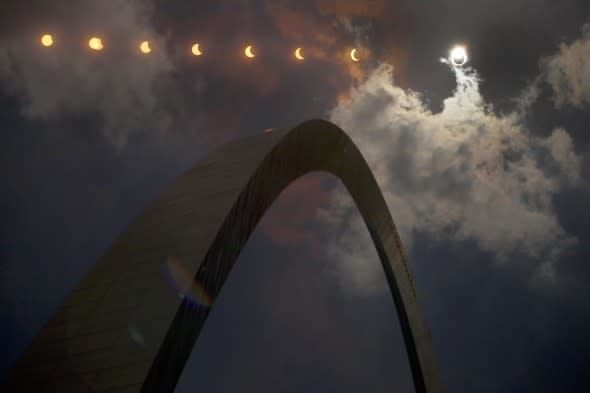
In this multiple exposure photograph, the phases of a partial solar eclipse are seen over the Gateway Arch on Monday, Aug. 21, 2017, in St. Louis. The Gateway Arch was just a few miles outside of the path of totality. (AP Photo/Jeff Roberson)
Millions of people across North America looked to the sky on Aug. 21 to witness a total solar eclipse, an event that hasn't been visible in the contiguous United States since 1979.
This was one of the most highly anticipated events of the year and it did not disappoint as people witnessed day turn to night as the moon passed in front of the sun.
Cassini ends its 13-year mission at Saturn
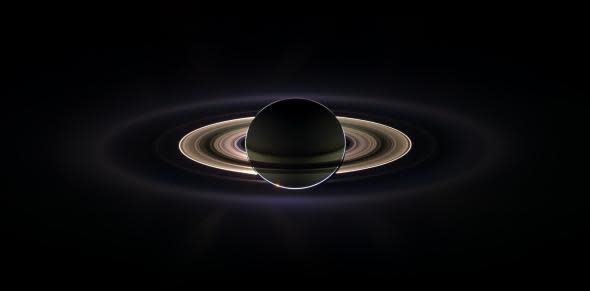
On several occasions in Cassini's 294 orbits around Saturn, the ringed gas giant eclipsed the sun giving the spacecraft the perfect opportunity to photograph the planet from a unique angle. "This marvelous panoramic view was created by combining a total of 165 images taken by the Cassini wide-angle camera over nearly three hours on Sept. 15, 2006," NASA said. (NASA/JPL/Space Science Institute)
A historic mission came to an end on Sept. 15 when NASA's Cassini spacecraft plunged into Saturn's atmosphere.
With the spacecraft nearly out of fuel, NASA sent Cassini on one final, grand finale, mission to pass between Saturn and its famous rings before burning up in the planet's atmosphere.
Cassini spent over 13 years orbiting Saturn, taking more than 300,000 images and sending back 635 gigabits of scientific data.
Peggy Whitson breaks record for most total days in space by NASA astronaut
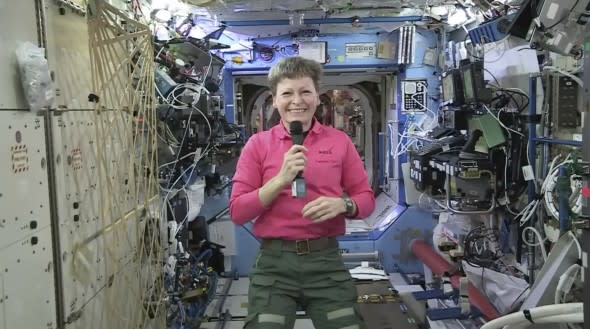
In this Thursday, April 13, 2017 image from video made available by NASA, astronaut Peggy Whitson speaks during an interview aboard the International Space Station. (NASA via AP)
NASA Astronaut Peggy Whitson made spaceflight history this year, setting a new U.S. record for most cumulative days in space on April 24. Less than two months later, Whitson broke the record for the longest single spaceflight than any other woman in history.
Whitson returned to Earth on Sept. 2 after an extended 288-day stay on the International Space Station (ISS), taking her cumulative time in space to 665 days.
March 30: SpaceX launches, lands first ‘flight proven' rocket
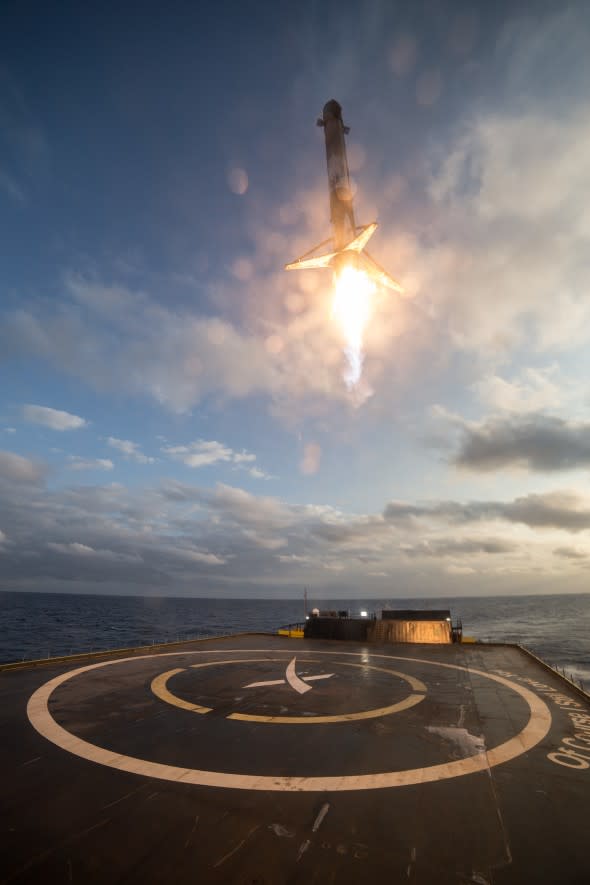
The first stage of SpaceX's Falcon 9 rocket about to land on their drone ship in the Atlantic Ocean after launching SES-10 on March 30, 2017. (Photo/SpaceX)
This year was the biggest year yet for SpaceX, a private American rocket manufacturer headed by Elon Musk.
On March 30, the company launched and recovered a rocket that had been used nearly a year earlier to launch supplies to the ISS. This was the first time that a rocket has been used for multiple missions into space, a major milestone in the company's goal of reusing rockets to reduce costs.
SpaceX also launched 16 missions into space, more than they had ever launched in a calendar year and more than any other company or agency has launched in 2017.
First interstellar asteroid discovered
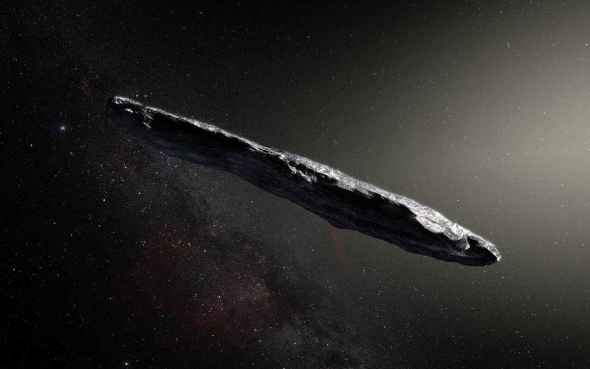
This artist's illustration shows the first interstellar asteroid, ‘Oumuamua. This unique object was discovered on Oct. 19, 2017 by the Pan-STARRS 1 telescope in Hawaii. Subsequent observations from ESO's Very Large Telescope in Chile and other observatories around the world show that ‘Oumuamua seems to be a dark red highly elongated metallic or rocky object, about 1,300 feet (400 meters) long, and is unlike anything normally found in the solar system. Credit: M. Kornmesser/ESO
A small and unusual asteroid was detected by astronomers using Hawaii's Pan-STARRS1 telescope in October, and after analyzing its motion, it was determined to be from outside of our solar system.
This is the first interstellar object to be observed and confirmed by astronomers.
"For decades we've theorized that such interstellar objects are out there, and now - for the first time - we have direct evidence they exist," Thomas Zurbuchen, associate administrator for NASA's Science Mission Directorate at the agency's headquarters in Washington, D.C., said in a statement.
Delaware-sized iceberg breaks off Antarctica
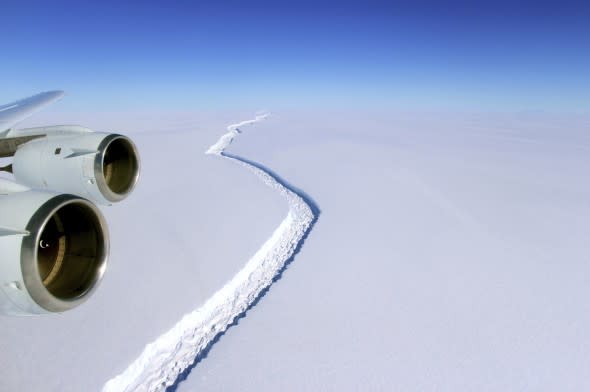
This Nov. 10, 2016 aerial photo released by NASA, shows a rift in the Antarctic Peninsula's Larsen C ice shelf. A vast iceberg with twice the volume of Lake Erie has broken off from a key floating ice shelf in Antarctica, scientists said Wednesday July 12, 2017. (John Sonntag/NASA via AP)
One of largest icebergs ever recorded broke off Antarctica on July 12, estimated to weigh more than 1 trillion tons and be about the same size as Delaware.
"Although this is a natural event and we're not aware of any link to human-induced climate change, this puts the ice shelf in a very vulnerable position," said Dr. Martin O'Leary, a Swansea University glaciologist. "This is the furthest back that the ice front has been in recorded history. We're going to be watching very carefully for signs that the rest of the shelf is becoming unstable."
Neutron star gravity waves
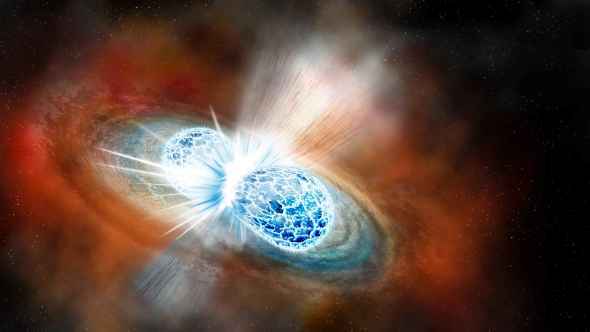
An artist's illustration of merging neutron stars. Credit: Robin Dienel; Carnegie Institution for Science
One of the biggest astronomical discoveries of the year made headlines in August when scientists observed gravitational waves from colliding neutron stars.
This finding opens the door to new and exciting research about the cosmos, providing evidence that neutron-star smashups are the source of much of the universe's gold and platinum.
NASA announces discovery of TRAPPIST-1, potentially habitable solar system
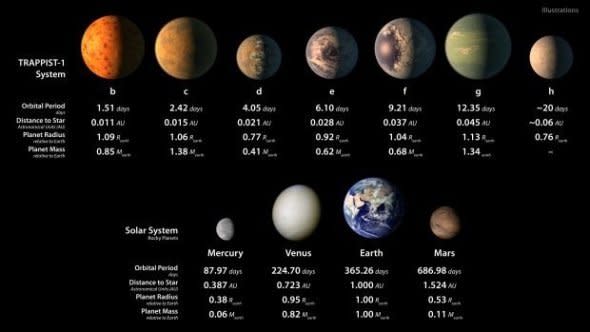
This chart shows, on the top row, artist concepts of the seven planets of TRAPPIST-1 with their orbital periods, distances from their star, radii and masses as compared to those of Earth. (Image/NASA)
Near the end of February, NASA announced the discovery of TRAPPIST-1, a solar system containing seven Earth-like planets orbiting a single star, all of which may contain liquid water.
"The discovery sets a new record for greatest number of habitable-zone planets found around a single star outside our solar system," NASA said.
"All of these seven planets could have liquid water - key to life as we know it - under the right atmospheric conditions, but the chances are highest with the three in the habitable zone," NASA said.
Questions or comments? Email Brian Lada at Brian.Lada@accuweather.com and be sure to follow him on Twitter!
Follow @wxlada